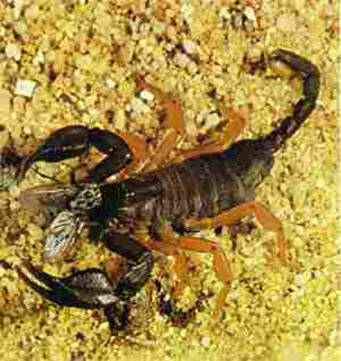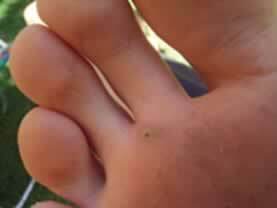You scorpions are not insects, it is yes venomous animals belonging to the Phylum Artropoda. All animals that have the venom-producing gland are called venomous.
Invertebrate animals, with nocturnal habits, usually hide during the day in dark places, such as under rocks, wood, tree bark, holes, among debris, etc. They feed on insects such as termites, flies, crickets, cockroaches, among others. In the absence of food, they can practice cannibalism, that is, they feed on other scorpions.
They can reach up to 25 cm in length and they sting when they feel threatened.

Scorpion feeding on a fly
There are many animals that like to feed on scorpions, such as centipedes, praying mantises, monkeys, spiders, frogs, lizards, seriemas, meerkats, owls, hawks, coatis, chickens, mice and some species of ants.

Meerkat feeding on a scorpion
Just like the spiders, the scorpions have the chelicerae, sharp structures near the mouth that are used to remove small pieces of food and bring them to the mouth.
You scorpions have eight legs; and in his cephalothorax there are pedipalps ending in tweezers, which have the function of holding and tearing food.
On the tip of the scorpion's tail there is a thorn called a telson. This is where the venom glands are located, and it is through that thorn that the scorpion inoculates the venom into its victims.

The scorpion injects venom into its prey through the telson
There are about 1500 species of scorpions worldwide and, of these species, only 20 of them are poisonous.
THE scorpion sting can cause severe pain, followed by vomiting, sweating, and nausea.
When bitten by a scorpion, a person should immediately seek medical attention. There, medication will be applied at the site of the bite to relieve pain and, in more severe cases, the application of antiscorpionic serum.
Paula Louredo
Graduated in Biology


